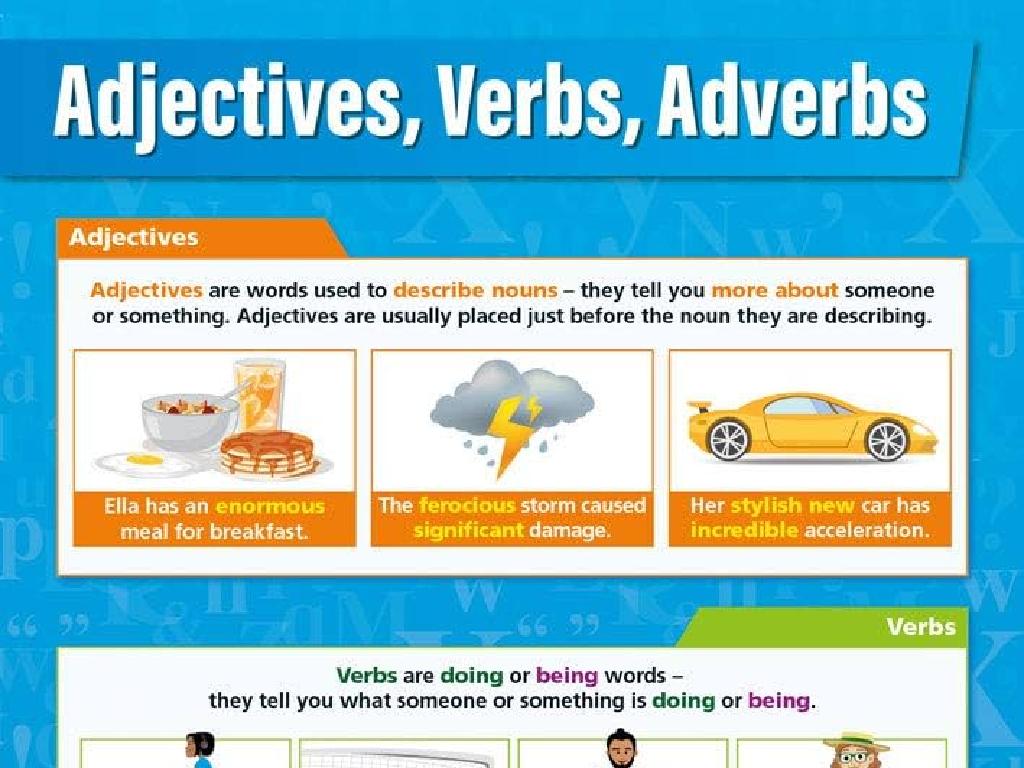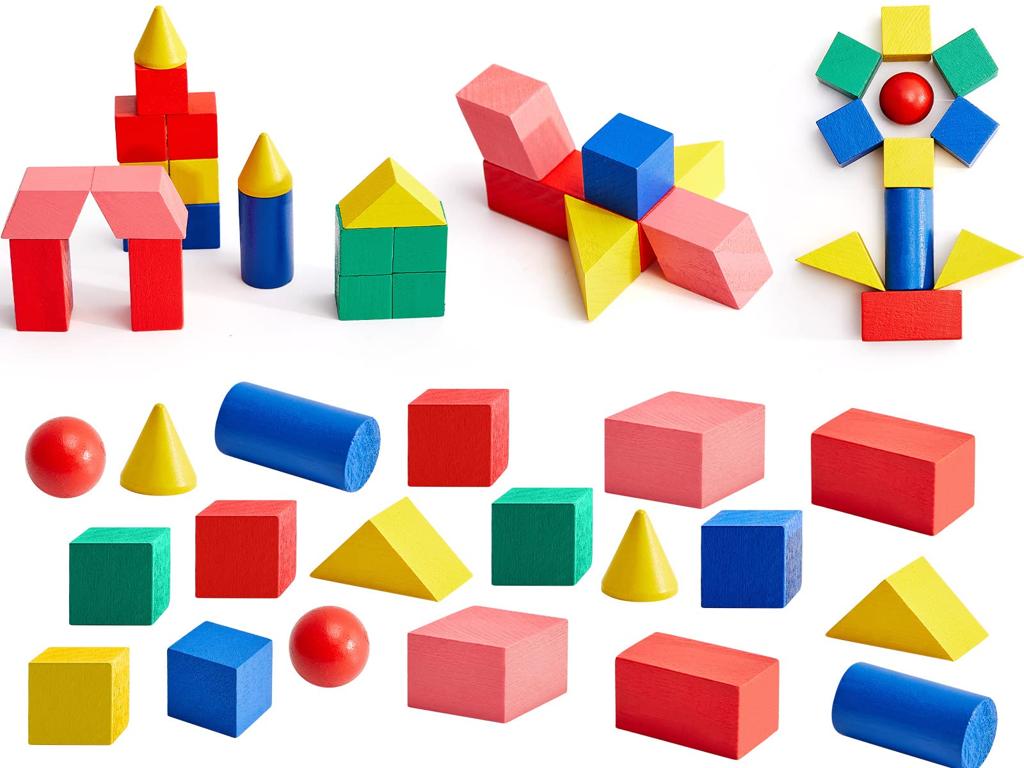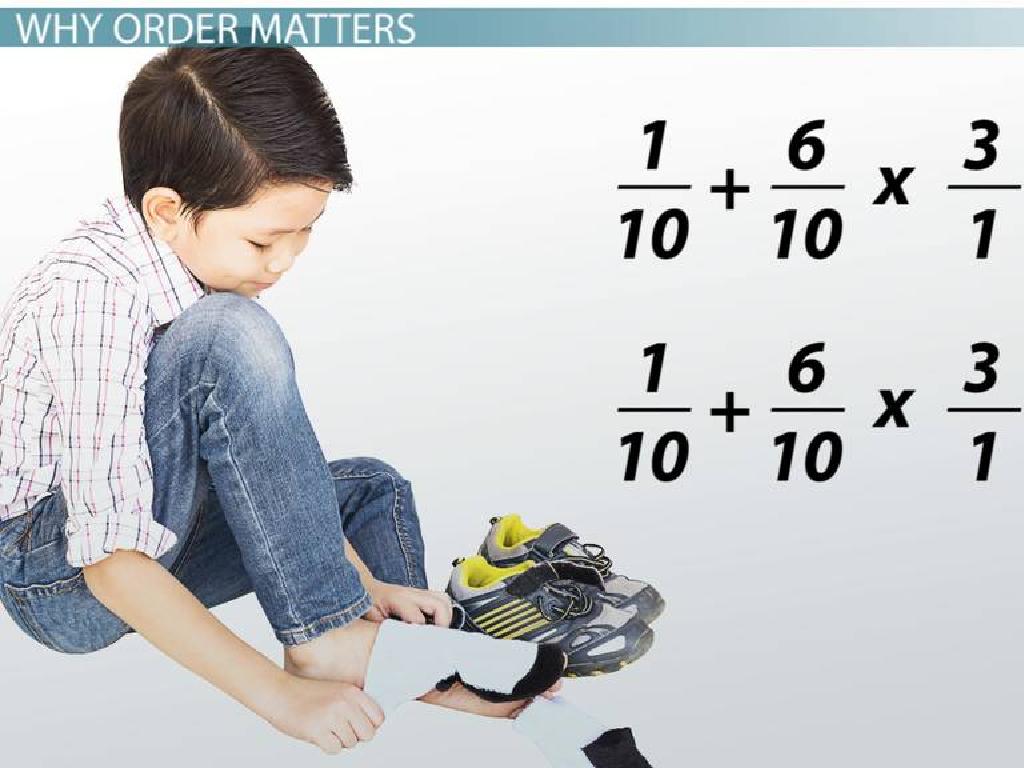Identify Chemical Formulas For Ball-And-Stick Models
Subject: Science
Grade: Seventh grade
Topic: Density
Please LOG IN to download the presentation. Access is available to registered users only.
View More Content
Introduction to Density and Chemical Structures
– What is Density?
– Density is mass per unit volume, like how compact a substance is.
– The significance of Density in Science
– Density helps predict behavior like floating or sinking.
– Chemical Formulas: A Preview
– Chemical formulas represent the elements in a compound and their ratios.
– Ball-and-Stick Models Explained
– These models visualize molecule shapes and the bonds between atoms.
|
Begin the lesson by explaining density as a fundamental concept that describes how tightly matter is packed in a substance. Emphasize its importance in science, particularly in understanding properties like buoyancy and material composition. Introduce chemical formulas as a way to denote the composition of substances, which will be crucial for today’s lesson on ball-and-stick models. These models are visual aids that help students grasp the three-dimensional arrangement of atoms in a molecule and the type of bonds connecting them. Ensure to provide examples of simple molecules and how their density affects their physical state and behavior in different environments.
Understanding Density
– Define density
– Density is mass per unit volume, a measure of how much ‘stuff’ is in a space
– Density formula
– Use the formula: Density = Mass divided by Volume
– Everyday density examples
– Objects floating on water or helium balloons rising in the air
– Density in ball-and-stick models
– Visualize molecules in a substance & relate to density
|
This slide introduces the concept of density, which is a foundational topic in understanding chemical structures and reactions. Start by defining density as the amount of mass in a given volume, which helps students understand why some objects float while others sink. The formula for calculating density is straightforward and should be memorized. Provide relatable examples such as why oil floats on water or why helium balloons rise to help students connect the concept to real life. Finally, explain how ball-and-stick models represent the arrangement of atoms in a substance and how this relates to the substance’s density. Encourage students to think about how the spacing of molecules in these models can affect the overall density of the substance.
Chemical Formulas and Ball-and-Stick Models
– What are chemical formulas?
– Symbols and numbers representing elements and their proportions in a compound.
– Elements vs. compounds
– Elements are pure substances; compounds are made of two or more elements combined.
– Reading chemical formulas
– Learn to interpret symbols and subscripts for elements in a formula.
– Ball-and-stick model basics
– Visual representation of a molecule showing the arrangement of atoms.
|
This slide introduces the concept of chemical formulas, which are essential for understanding the composition of compounds in chemistry. Begin by explaining that chemical formulas are like shorthand for the elements and the number of atoms of each element in a compound. Highlight the difference between elements (pure substances) and compounds (combinations of elements). Teach students how to read chemical formulas, including the symbols for elements and the subscripts that indicate the number of atoms. Introduce the ball-and-stick model as a tool to visualize the three-dimensional structure of molecules, which can help in identifying the chemical formula of a substance. Encourage students to practice by writing chemical formulas for simple compounds and building their ball-and-stick models.
Understanding Chemical Formulas with Ball-and-Stick Models
– Visualize molecules via models
– Ball-and-stick models help us see how molecules look and connect.
– Models symbolize chemical formulas
– Each ball and stick arrangement correlates to a molecule’s structure.
– Ball colors represent atom types
– Different colored balls correspond to different elements, like white for hydrogen.
– Stick lengths indicate bond lengths
– Longer or shorter sticks can show double or single bonds, respectively.
|
This slide introduces students to the concept of ball-and-stick models as a way to visualize molecular structures and understand chemical formulas. Emphasize that these models are a visual tool to help them grasp the arrangement of atoms in a molecule. Explain that the colors of the balls are standardized to represent different elements, and the lengths of the sticks can indicate the type of bond and bond length between atoms. Encourage students to familiarize themselves with the color coding and to practice interpreting these models to deduce the chemical formula of a molecule. Provide examples of simple molecules and ask students to identify the elements and types of bonds present.
Identifying Chemical Formulas with Ball-and-Stick Models
– Match models to chemical formulas
– Understand how to correlate the 3D ball-and-stick models with their respective chemical formulas.
– Example: Water (H2O) model
– Observe the H2O model: 2 hydrogen (small balls) and 1 oxygen (large ball) connected by sticks.
– Practice with various models
– Use class models to determine the chemical formula by counting the balls (atoms) and types.
– Recognize patterns in structures
– Notice how the arrangement of balls (atoms) can help identify the molecule.
|
This slide introduces students to the concept of identifying chemical formulas through ball-and-stick models, which are visual representations of molecules showing the arrangement of atoms. Start by explaining how each ball represents an atom and sticks represent bonds. Use the water molecule as a clear example, showing how two hydrogen atoms bond with one oxygen atom to form H2O. Provide students with various ball-and-stick models and guide them to write the corresponding chemical formulas. Emphasize the importance of recognizing patterns in atomic arrangements to deduce molecular structures. This activity will help students visualize and better understand the composition of molecules.
Density and Chemical Formulas
– Relation of density to formulas
– Density helps predict how substances interact based on their molecular structure.
– Density in everyday substances
– Water (H2O) has a different density than oxygen (O2), even though both contain oxygen.
– Calculate density from models
– Use the model to find the mass and volume of a molecule, then apply density formula.
– Understanding ball-and-stick models
– Ball-and-stick models represent atoms as balls and chemical bonds as sticks.
|
This slide aims to explain the concept of density in the context of chemical formulas and how it can be visualized using ball-and-stick models. Start by discussing how density is a property that can help predict how different substances will interact based on their molecular structure. Provide examples of common substances and their densities to illustrate the point. Teach students how to calculate the density of a substance by determining the mass and volume from a ball-and-stick model and then using the density formula (density = mass/volume). Finally, ensure students understand how to interpret ball-and-stick models, recognizing the representation of atoms and bonds, which is crucial for visualizing molecular structures and understanding their densities.
Class Activity: Build Your Own Ball-and-Stick Model
– Construct a ball-and-stick model
– Select a chemical formula
– Choose simple molecules like H2O, CO2, or O2
– Present your model to the class
– Explain the significance of your model
– Discuss how the model represents molecule structure
|
This class activity is designed to help students understand chemical formulas and molecular structures through a hands-on approach. Provide students with a variety of balls representing different atoms and sticks for bonds. Encourage them to select a chemical formula and build a corresponding ball-and-stick model. Once completed, each student will share their model with the class, explaining the chemical formula it represents and how the atoms are bonded. This activity will reinforce their understanding of molecular geometry and the physical representation of chemical compounds. Possible variations of the activity could include modeling different types of molecules, comparing polar and nonpolar molecules, or creating models of larger organic compounds.
Conclusion: Chemical Formulas & Density
– Recap: Chemical Formulas
– Review how ball-and-stick models represent molecules
– Significance of Density
– Density’s role in material properties and behavior
– Engage in Q&A session
– Review key concepts
– Reinforce learning with a summary of today’s lesson
|
As we conclude today’s lesson, let’s review the chemical formulas represented by ball-and-stick models, emphasizing the visualization of molecules’ structure. Understanding density is crucial as it affects how substances interact, such as oil floating on water. Encourage students to ask questions to clarify any doubts, fostering an interactive environment. Conclude with a review of the key concepts to solidify the students’ understanding and prepare them for assessments. This recap will help students connect the dots between abstract formulas and tangible models, reinforcing the importance of density in science.
Homework: Chemical Formulas and Density
– Find household items for homework
– Identify each item’s chemical formula
– Look for the composition label or research
– Create a ball-and-stick model
– Use materials like clay or beads to represent atoms
– Write about the item’s density
– Explain how tightly packed the atoms are in the substance
|
This homework assignment encourages students to apply their knowledge of chemical formulas and density in a practical context. Students should look for everyday items, identify their chemical makeup, and then construct a ball-and-stick model to represent the molecular structure. Additionally, they should write a brief explanation of the item’s density, considering how the arrangement and type of atoms in the substance contribute to its overall density. This will help them understand the concept of density in a tangible way. In the next class, students will present their models and explanations, fostering peer learning and discussion. Provide examples of household items with simple chemical structures, such as table salt (NaCl) or water (H2O), and remind them to consider safety when selecting items.






